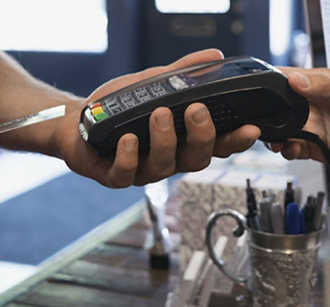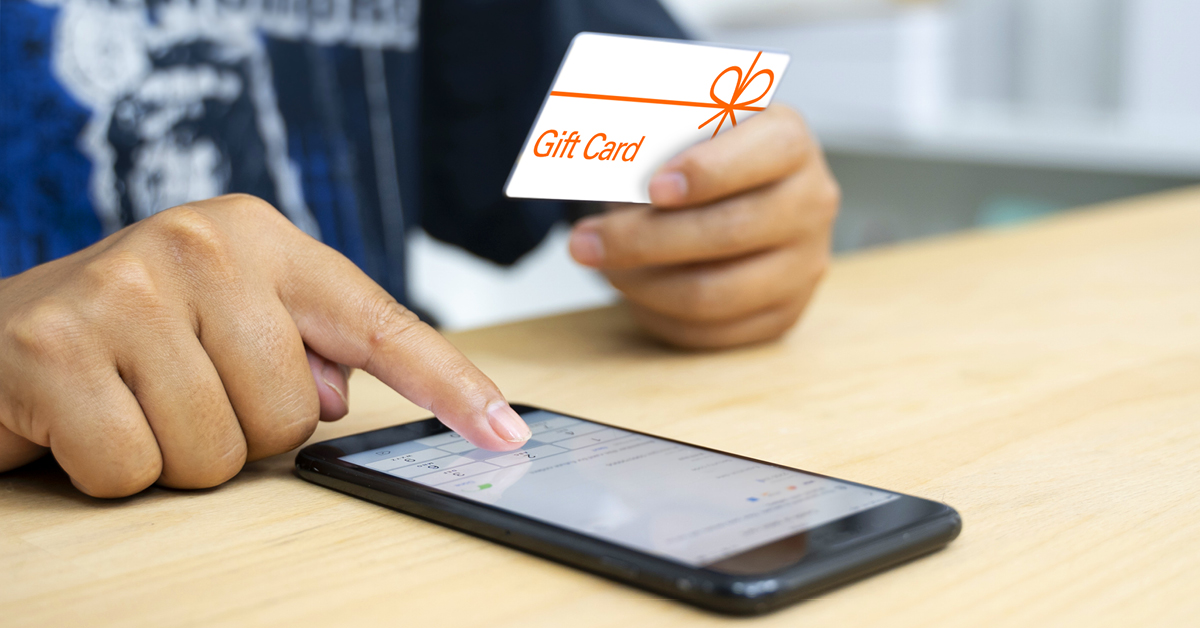
How Do Gift Cards Work?
Gift cards are so popular today that it’s hard to believe they didn’t exist 25 years ago. Initially, merchants created and sold their own gift cards. Recipients were only able to use them to buy products or services from the merchant listed on the front of the card.
As a cash payment alternative, gift cards have undergone many changes over the years:
- When Neiman Marcus offered the plastic gift card in 1994, the retailer didn’t even promote them1
- The following year, Blockbuster was the first to display gift cards and launch its program with major advertising
- Today, the major card networks offer gift cards (commonly referred to as prepaid cards). While there is a minimal charge to purchase prepaid cards, they run on the open-loop system so they can be used to pay for purchases at almost any merchant
Gift Cards: A Timeline
1930s: Department stores sell paper gift certificates2
1970s: McDonald’s introduces paper gift certificate books for holiday gifts3
1994: Neiman Marcus sells first plastic gift card4
2011: Digital eGift cards are introduced to consumers5
2016: Starbucks launches reloadable gift cards tied to its loyalty program6
2017: Consumers name gift cards as #1 most wanted gifts for the 11th year in a row7
How Do eGift Cards Work?
eGift cards can be purchased in-store, online, or on a mobile device. Consumers choose an amount to deposit onto the card before providing an email address or phone number for the desired recipient.
Once payment is processed, a digital card loaded with the prepaid balance is instantly delivered via:
- Text
- Social media
- Mobile app
Stored on the recipient’s computer or smartphone, these eGift cards can be used to purchase goods and services across any channel – in-store, online, or over the phone.
Today, more and more consumers are starting to purchase digital prepaid cards for themselves as a way to control their spending and collect merchant rewards.
To capitalize on this growing trend in cash payment alternatives, numerous mobile apps now exist that allow consumers to purchase, send, store, and manage gift cards from a single dashboard.
Checks and ACH Payments
Checks Adapting to the Digital World: Key Facts
Checks started appearing in the U.S. in the 1600s. They were simply written notes that gave an individual or commercial entity permission to access money from the payer’s bank account.
While the retail industry never fully embraced check acceptance due to the risk involved, checks still remained one of the most popular alternative payment methods for certain types of purchases.
Once a check is deposited into a recipient’s account, the banks handle payment transfers. The process used to take 2-3 days. With today’s electronic transfers, it now only takes 24 hours.
While physical check writing is on the decline as an alternative payment method, consumers now have the option of making electronic check payments using the ACH (Automated Clearing House) network.
As a result, many merchants and businesses have started adding ACH as a payment option.
Merchant Benefits of Electronic Check Acceptance
Below are just some of the benefits merchants receive when they accept electronic checks as cash payment alternatives:
- They provide customers with another way to buy
- They deliver higher profits through lower transaction fees
- They create opportunities to pass on savings to customers in the form of lower prices or higher rewards
Emerging Alternative Payment Methods
Mobile Wallet Payments
The Introduction of Virtual Payments
Mobile wallets are apps that allow smartphone users to load and save payment data, including credit, debit, and gift card information.
Apple Pay is arguably the biggest success story in this arena. Among Android users, the Samsung Pay alternative is also quite popular.
Most mobile wallet payment apps can also store electronic boarding passes, loyalty cards, and event tickets.
2011: Google introduces the first mobile wallet, but the adoption rate is low8
2014: Apple launches a range of Apple Pay alternatives tied to its iOS ecosystem9
2015: Samsung Pay and Android Pay™ debut10
To accept mobile wallet payments, a merchant must purchase a contactless payments reader that uses Near Field Communications (NFC)– a wireless technology similar to Bluetooth and Wi-Fi.
When customers want to use their mobile wallet at the point of sale (POS), they hold their phone a few centimeters from the reader to send payment information through for processing.
P2P Payments
The Increasing Importance of Direct Personal Payments
Money exchanged electronically between two people is called a peer-to-peer (P2P) payment. Prior to P2P technology, the only ways users could send money to each other was to:
- Give cash
- Write a check
- Wire funds
- Use a bank transfer
Then, the Internet came along and changed the entire payments landscape. With the rise of eCommerce, consumer demand for easier, cheaper, and faster ways to send and receive money skyrocketed:
- In 1998, PayPal became the first company to facilitate P2P payments.11 The success of sites like eBay helped spur PayPal’s growth
- Today, multiple apps – including Venmo, Apple Cash, and Google Pay – deliver P2P payments in short timeframes with little to no fees
- Once an individual sets up an account on a P2P app with his or her checking, debit, or credit card information, the user can send funds to the recipient using his or her cell phone number or email address
- After a recipient accepts the payment, the individual has the option of storing it in a mobile wallet or transferring it to his or her bank account
- Some P2P apps also offer digital debit cards that store balances and can be used for payments
- To compete, the major banks partnered to create Zelle®. It allows bank customers to transfer cash directly from their account into another person’s account at any participating bank with no middleman
- P2P payment services have also been built into social media platforms, like Facebook Messenger
Source
1, 4 “The Gift Card Was Invented by Blockbuster in 1994,” Smithsonian.com, 23 December 2013
2, 3 “The Evolution of Gifting and Gift Cards,” | GiftCardGranny.com, 25 April 2013
5 “Gift Card Survey 2011: E-Gift Cards Take Center Stage,” CreditCards.com, 18 November 2013
6 “ICYMI February: First Data in the News,” First Data, 25 February 2016
7 “Top Gift Card Statistics,” GiftCards.com
8 “Google Wallet Creators Reflect On Its Failures, Lessons,” Fast Company, 20 November 2013
9 “Apple Announces Apple Pay,” Apple, 31 August 2018
10 “Android Pay vs Apple Pay vs Samsung Pay: Pros and Cons,” Android Authority, 8 June 2018
11 “The Evolution of the Mobile Payment,” TechCrunch, 2016





